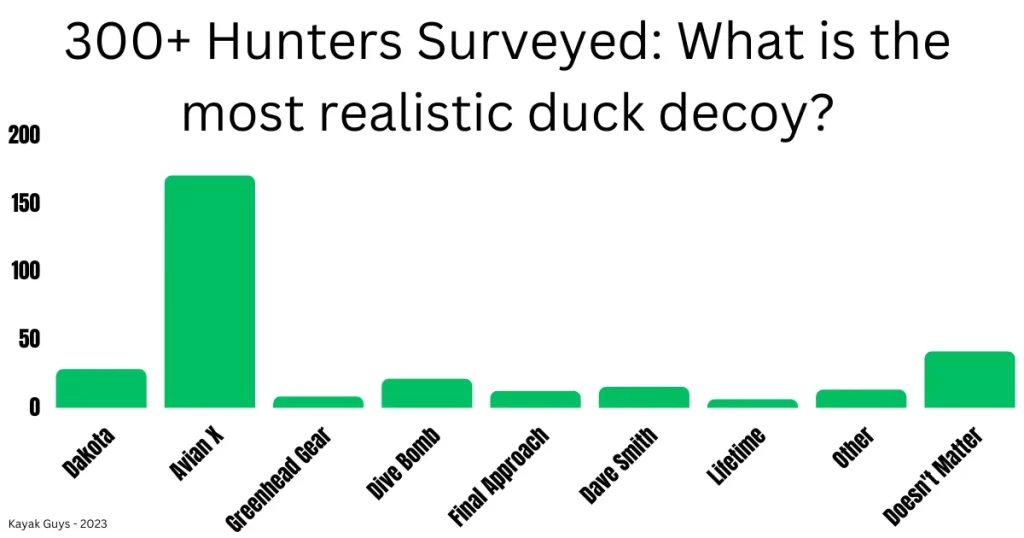Ever wanted to hunt with goose shell decoys over water, but needed to find a way to make them float? Well then you need the Goose Hat! Lifelike motion, top-notch concealment, and an instant blind wherever you set up.
In this ‘tutorial’ Dan goes over the best method for floating goose shells: “Stick em’ on your head!” Think of the advantages. Need to step out to re-arrange the decoys but a flock of birds starts working? No problem! Caught out of the blind with your waders down? No problem! Lack of motion on the water during a calm day? No problem!
We are a participant in the Amazon Services LLC Associates Program and other Affiliate Programs. Start your shopping through these affiliate links to help support this website
Ok, ok, let’s get serious here for a minute. While mounting a goose shell on your head might be effective for a single decoy, what if you want a couple dozen floating goose shells?
The benefits of having floating goose shells are great: they’re stackable, lightweight, and don’t take up very much room. For the walk-in style of hunting that we do, they check every single box except for 1: they don’t float, which is a huge problem for hunting marshland, flooded crops, or any other water source frequented by ducks and Canada geese. However, if you’re willing to do a little bit of work and accept some trade-offs, you can set out a pretty big Canada goose spread with floating shells. If you want to learn how this is possible, keep reading!
If you want to make some floating goose shells, the first thing you’re going to have to do is find some goose shells! If you’ve already got a stack of them, then great! You can skip on ahead to the next section. But if not, here are a few decoys that we have had success with both in the marsh and in the field.
Standard goose shells will work just fine for turning into floaters, but you won’t have quite as much pop or draw as the magnum or super magnum shells. Standard shells do have quite a few benefits though, as they are usually much cheaper than the larger shells. They are also lighter and easier to transport. They may not have the pulling power of a larger decoy, but you can compensate by setting out more of them if you have limited space in your decoy bag.
If you’re going with a standard shell, I like to get ones with flocked heads. Flocking on your decoys cuts down on the glare and adds a lot of realism to your spread. If you’re going for maximum realism, I would suggest getting a quality standard goose shell with a flocked head.
If maximum visibility and pulling power is the name of your game, then you may want to consider a magnum or super magnum shell. These shells are significantly larger than the standard shell, but in my experience, they usually lack a lot of the realism that you get with the smaller shells. (This is also the shell you will want to get if you’re making a goose hat!). While these decoys will give your spread more visibility and pulling power, they are not without their tradeoffs.
Obviously, larger shells are going to weigh more and take up more room in your boat or decoy bag. Apart from that, however, they are just as easy to turn into floaters as regular shells. One other thing to consider is that the larger surface area of the magnum shell will make it more susceptible to wind, which can be either a good or bad thing depending on the conditions.
So you’ve got yourself a stack of decoys, and you’re ready to turn them into floaters! Great! There are 2 primary methods of doing this that we have had success with in the past, and they are both incredibly simple. We usually use either stakes or foam pipe insulation to keep our decoys from sinking in the water.
This method of turning shell decoys into floaters is so simple, you’ve probably already thought of it yourself! Simply take a strip of foam pipe insulation (the kind that is already slit down the middle) and run it around the bottom of your shell decoy. It can help a little bit if you get the pipe insulation that has adhesive along the slit, but that can be a bit more expensive and is not necessary.
Once the pipe insulation is in place, you will want to secure it with several strategically placed zip ties. Once you’ve got your flotation device in place, you’ll want to clip a Texas rig onto one of your zip ties to keep it from floating away. This is a better method to use in higher wind scenarios, but they do take up a bit more space since the pipe insulation does not allow for efficient stacking of the decoy shells.
Pros:
Cons:
If you want to retain all of the stackability of your Canada goose shells, then the stake method may be a bit better for you. The only modification you will have to do to your goose shells is drilling a small hole in the top of the decoy. After that, these stakes simply slide right into the hole, and the spring loaded support gives you excellent motion in even light breeze. The obvious downside to this is that the shells have a tendency to de-stabilize in high wind conditions. I know we have had to chase goose shells across the marsh on more than one occasion!
Hold up just a minute here, those stakes aren’t very long! How am I supposed to use those in waist-deep water? That’s a great question, with a very cheap and simple answer: ½” electrical conduit. Since you should have a good idea of the water depth you’ll be hunting (you did do your scouting, right?) simply cut sections of half-inch EMT (make sure you get the metal stuff, the plastic is too flimsy), stick them in the mud, and drop your stakes down inside the conduit. This method will leave your decoys floating just a few inches above the water, so there’s no way they will sink!
Pros:
Cons:
Obviously, this method of creating floating goose shells is not going to be as good as purchasing actual floating decoys, because if it was, there would be no market for goose floaters! Creating your own floating shells does have quite a few advantages, but they are not perfect for every situation.
High winds and rough waters are situations where you’re better off leaving the shells at home. The pipe insulation method isn’t very stable, and the decoys are prone to sinking or flipping in rough water. The staking method isn’t affected by the waves, but high winds can easily knock them off their stakes or tip them over. Unfortunately, this makes these decoys pretty ineffective if you hunt large lakes, reservoirs, or rivers.
However, if you primarily stick to shallow water prairie marshes and small farm ponds like we do, then turning your goose shells into floaters can be a great way to not only save some money, but also increase the volume of your spread.
If you’re like us, we are always trying to find a way to increase the pulling power of our spread by carrying more decoys in our limited space. In situations like these, we occasionally like to go with our homemade floating goose shells. While they do have their limitations, we have had quite a bit of success using these methods. Do you have any better methods to create your own floating goose decoys? If so, be sure and let us know!

(620) 386-4781
Questions? Call or Text
